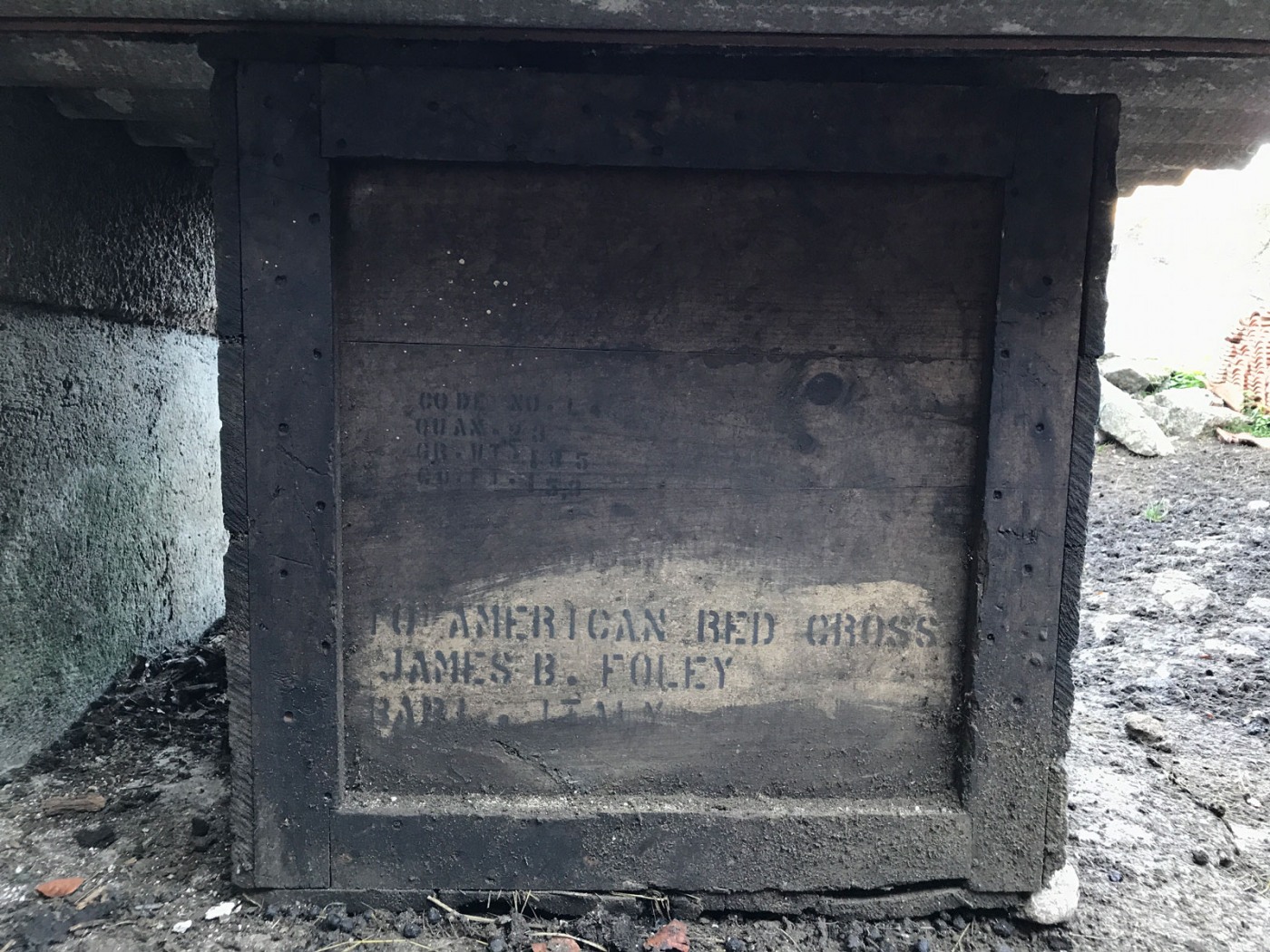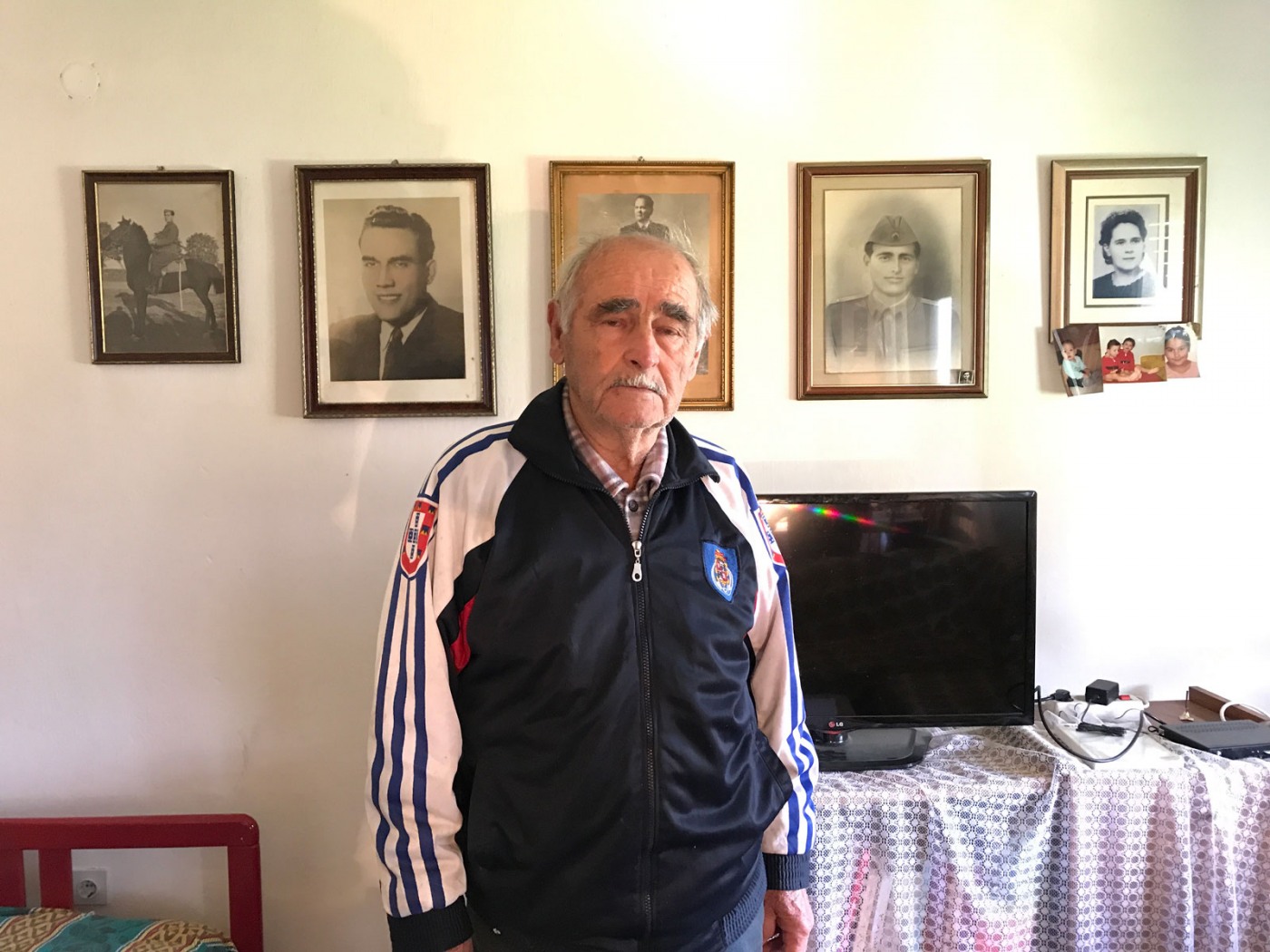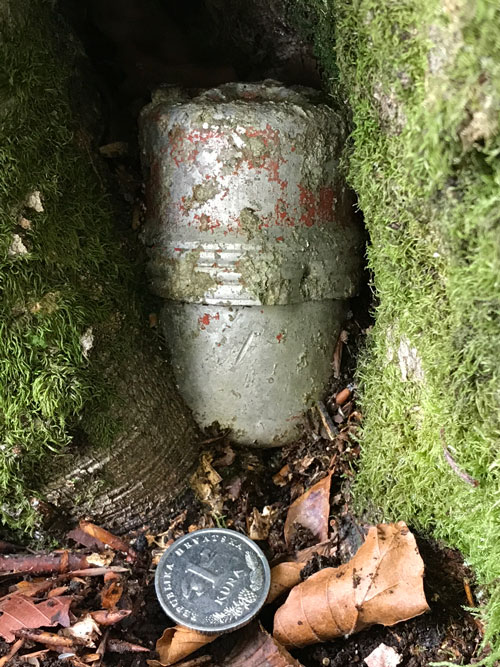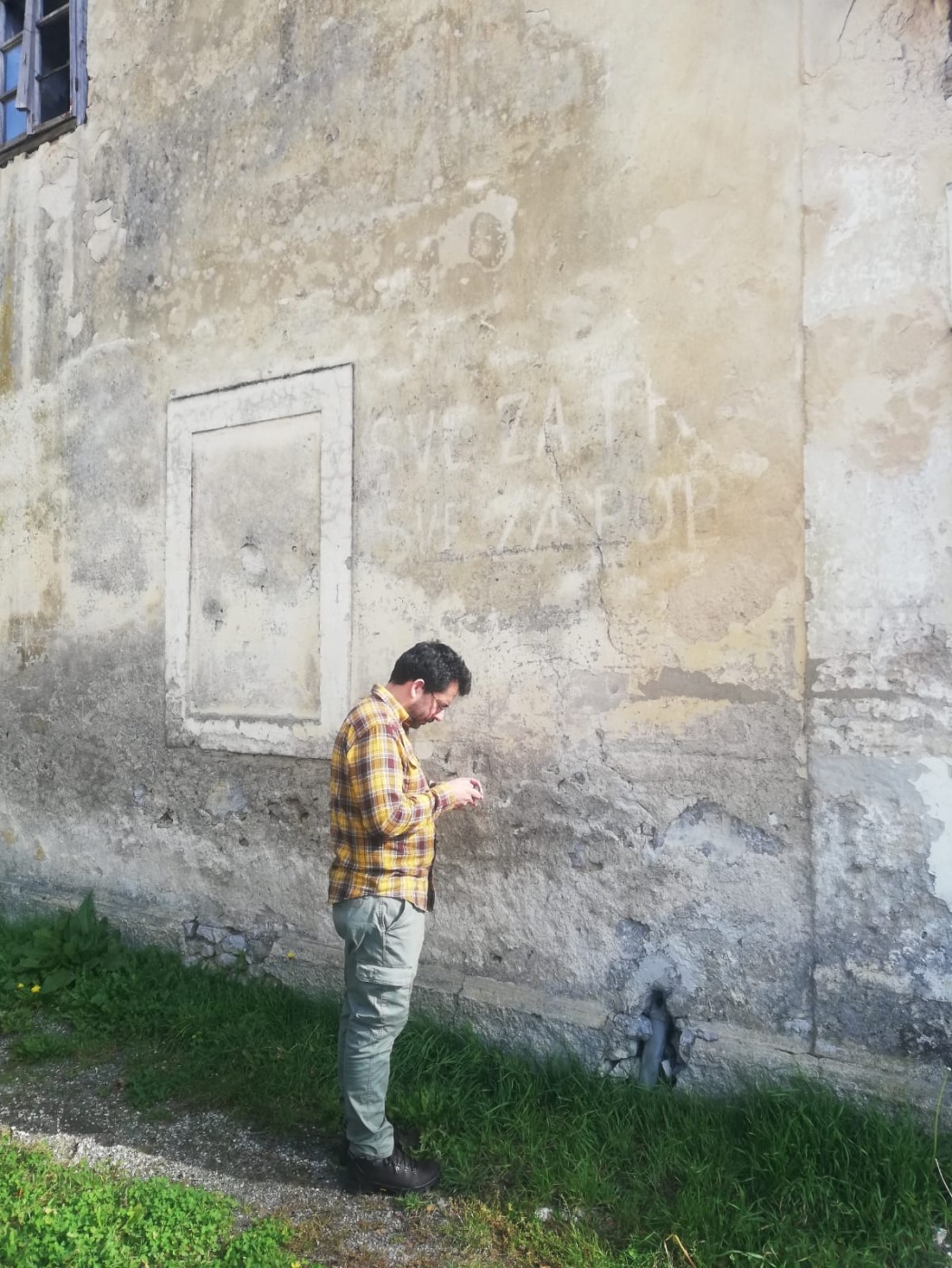PROVIDENCE, R.I. [Brown University] — In the foothills of Croatia’s Dinaric Alps, only a dozen miles inland from the tourist-trafficked Adriatic coast, evidence of the destruction wrought by World War II still remains.
Vines grow over the foundations of a stone church, long ago blown to pieces. Parts from an American plane linger on the ground at the site of a crash. In the place where an entire small town was leveled by bombs, one explosive device sits undetonated.
On a recent trip to the country’s Drežnica region, archaeologist Rui Gomes Coelho was unsurprised to come across these artifacts, given that Croatia — formerly part of Yugoslavia — was a center of bitter division and ruthless ethnic cleansing in the 1940s.

More surprising, he said, were the material remnants of unity, trust and support between the residents of Drežnica and the refugees who passed through the region to escape bombs and persecution: a wooden crate from the American Red Cross, once full of relief supplies; flasks still containing medication; fire pits in caves where some took shelter and accepted supplies from townspeople.
“When we think of the second world war, we have this image of major combat, of generals fighting on the battlefields,” Coelho said. “But while the battles were going on, refugees were hiding in the mountains, and local women and men were risking their lives to provide medical care for them and carrying vegetables up to their camps.”
Here in the center of the Balkans, Coelho, a postdoctoral researcher at Brown University’s Joukowsky Institute for Archaeology and the Ancient World, is part of an international team that is tracing a little-known route once trod by tens of thousands of Balkan refugees during WW-II. Many of these refugees traveled to escape death, internment and oppression at the hands of the Axis powers and other fascist groups who controlled much of the Balkans. Some were bound for nearby regions that had been liberated by the Yugoslav resistance movement; others headed toward Allied refugee camps in Italy, Syria and Egypt.

“During World War II, people from different ethnic and religious groups came together in the resistance movement to build a network of camps and hospitals,” Coelho said. “They weren’t thinking purely about that current moment of warfare. They were also thinking about how to protect people who had no homes and no food and no care. They were thinking about how to build a common society for the future.”
Coelho isn’t just tracing the refugee route for history’s sake, he said. He’s engaging in what many in his field call critical archaeology: “this idea of studying the past in order to answer questions we ask today, to apply past lessons to issues that matter today.” He is one of countless new humanists at Brown who are dedicated to teaching and research that draws upon the historical record to address current intellectual and social problems of broad significance — a growing area of focus at the University.
There has never been a better time to study the historical refugee route, he said. After decades of quiet on the trail, foot traffic is picking up again. This time, refugees are traveling in the opposite direction, fleeing war-torn or poverty-stricken countries in the Middle East, Central Asia and Africa. Many plan to settle in European countries such as Germany and Austria. The refugees’ presence in the Balkans has raised new questions about Europe’s role in providing aid and asylum to those who face conflicts in their home countries.
“We don’t want to map this route and put these refugees in danger,” Coelho said. “But we want to give visibility to its existence, and we want to compare the past and present. We are facing growing divisions in Europe, and there is again a threat of xenophobia; we believe that the resistance struggle during WW-II is a great example of how people can reach across ethnic and religious lines to fight together against injustice in times of crisis.”


.jpg)